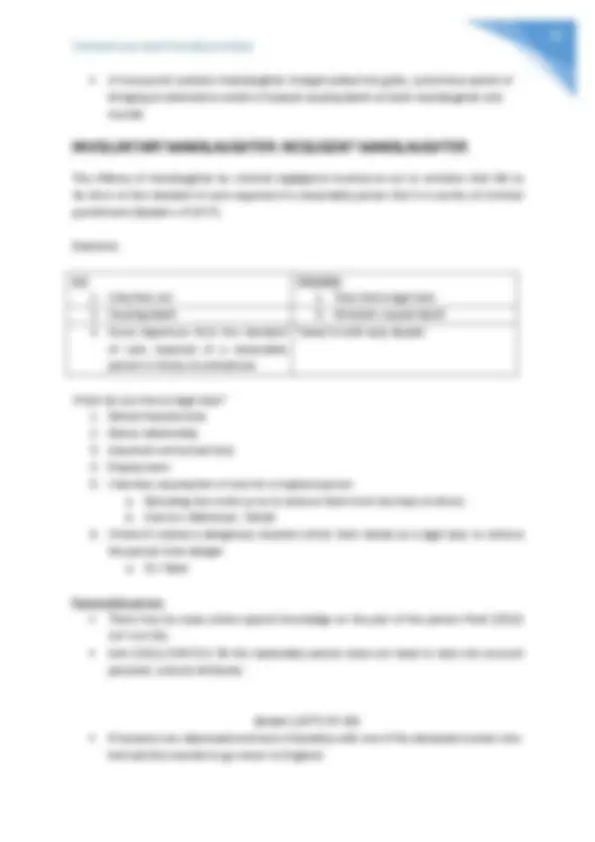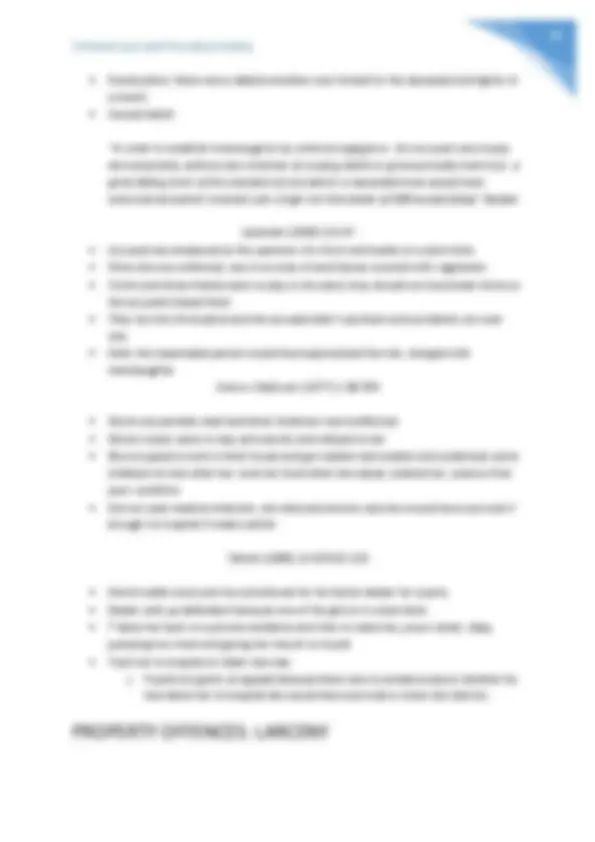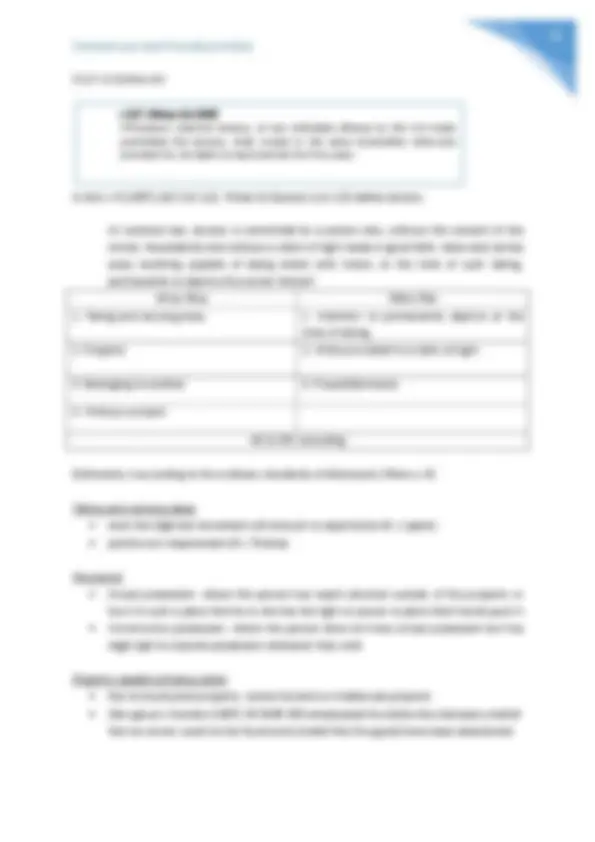





Study with the several resources on Docsity

Earn points by helping other students or get them with a premium plan


Prepare for your exams
Study with the several resources on Docsity

Earn points to download
Earn points by helping other students or get them with a premium plan
Community
Ask the community for help and clear up your study doubts
Discover the best universities in your country according to Docsity users
Free resources
Download our free guides on studying techniques, anxiety management strategies, and thesis advice from Docsity tutors
An in-depth analysis of unlawful and dangerous act manslaughter and assault causing death in criminal law. It includes case studies, legal elements, and controversies surrounding these offenses. The document also covers the burden of proof and the definition of manslaughter.
What you will learn
Typology: Summaries
1 / 5

This page cannot be seen from the preview
Don't miss anything!




Cavanough (2007) NSWSC 561
I. INVOLUNTARY MANSLAUGHTER: UNLAWFUL AND
DANFGEROUS ACT
Involuntary manslaughter involves cases where the accused does not have the necessary mens rea for murder (or even any mens rea at all), but is still regarded as sufficiently blameworthy to justify criminal punishment.
The two major categories of involuntary manslaughter are:
Unlawful and dangerous act (sometimes known as battery manslaughter)
Elements:
II. ASSAULT CAUSING DEATH
Controversy with the laws
“In order to establish manslaughter by criminal negligence…the accused consciously and voluntarily, without any intention of causing death or grievous bodily harm but…a great falling short of the standard of care which a reasonable man would have exercised and which involved such a high risk that death of GBH would follow” Nydam
Lavender (2005) CLR 67
Taktak (1988) 14 NSWLR 226
S 117 of Crimes Act
In Ilich v R (1987) 162 CLR 110, Wilson & Dawson JJ at 123 define larceny:
At common law, larceny is committed by a person who, without the consent of the owner, fraudulently and without a claim of right made in good faith, takes and carries away anything capable of being stolen with intent, at the time of such taking, permanently to deprive the owner thereof. Actus Reus Mens Rea
AR & MR coinciding
Dishonesty is according to the ordinary standards of dishonesty (Peters v R)
Taking and carrying away
Possession
Property capable of being stolen
s 117Crimes Act 1900 Whosoever commits larceny, or any indictable offence by this Act made punishable like larceny, shall, except in the cases hereinafter otherwise provided for, be liable to imprisonment for five years.